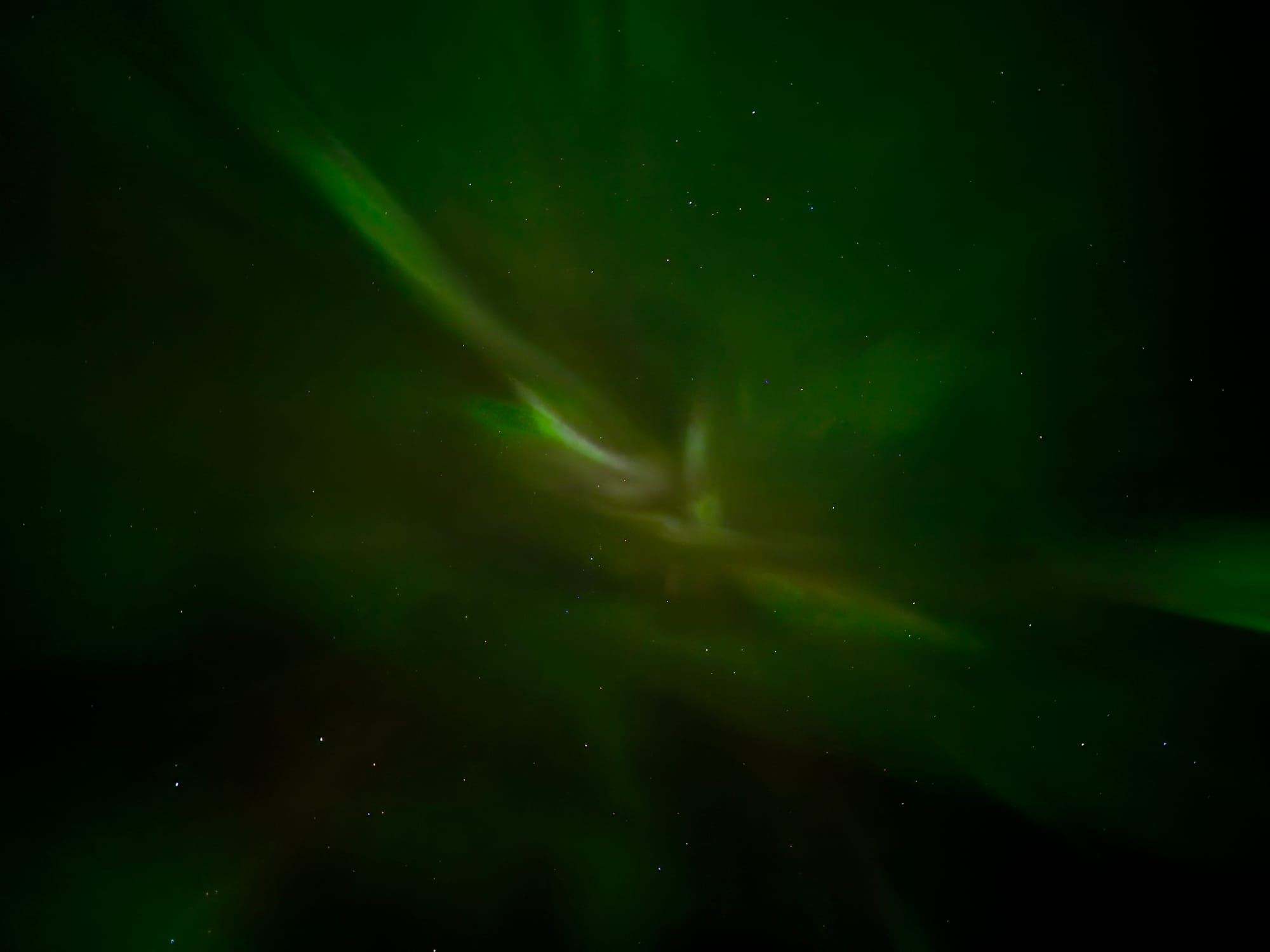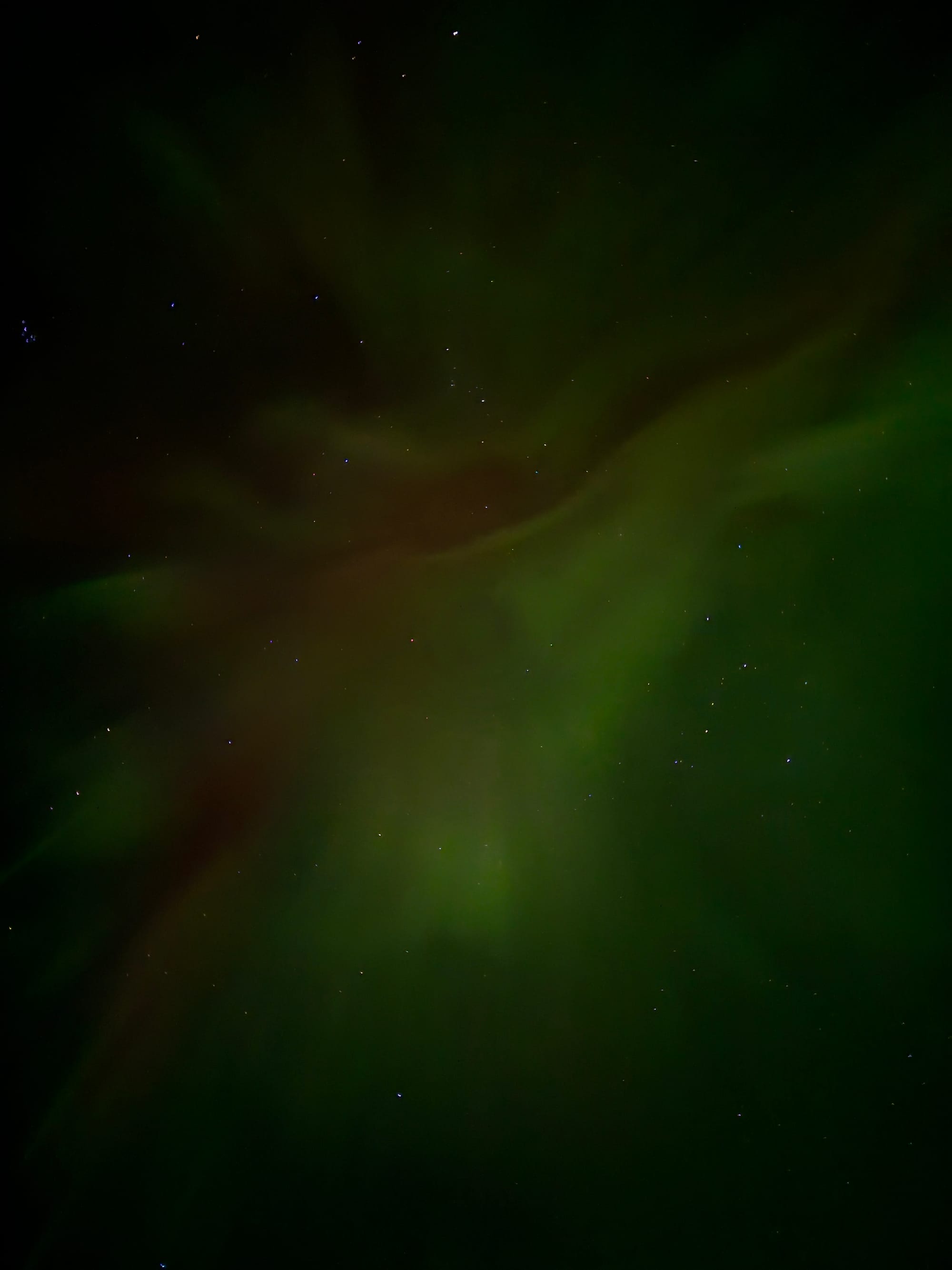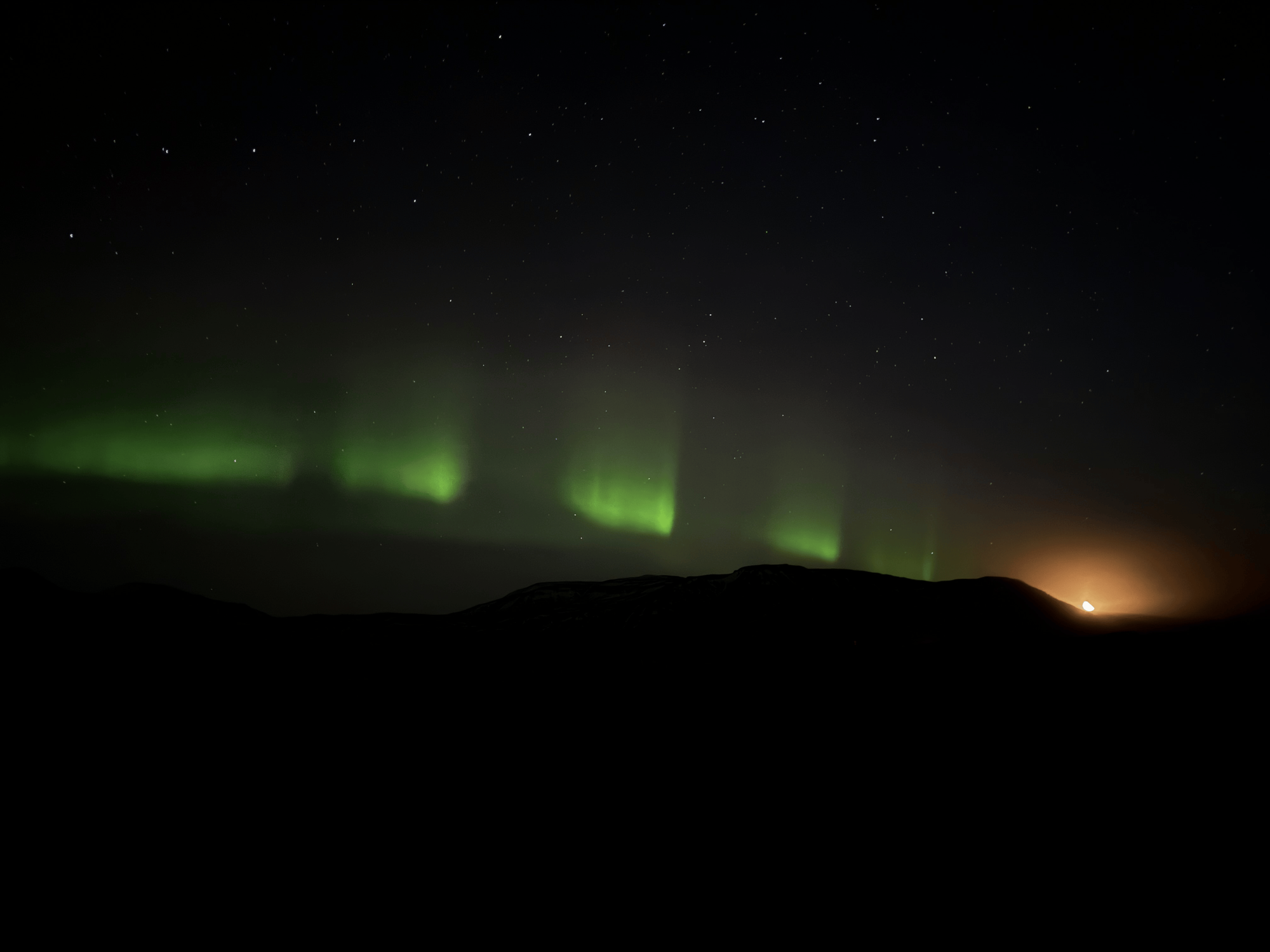LIVE From 🇮🇸 Iceland: Historic Geomagnetic Storm Delivers Unprecedented Aurora Display Across Northern Hemisphere
Last night's aurora borealis event over Iceland marked one of the most significant geomagnetic disturbances recorded in recent decades.

Last night's aurora borealis event over Iceland marked one of the most significant geomagnetic disturbances recorded in recent decades. The storm, triggered by an X5.1-class solar flare from active region AR4274, produced hemispheric power readings of 204 gigawatts and drove the interplanetary magnetic field's Bz component to -55 nanotesla. These measurements place the event among the strongest solar storms since comprehensive monitoring began.
The Numbers That Matter
The X5.1 flare erupted at 10:04 UTC on November 11 from a sunspot region that has remained highly active throughout the current solar cycle. Solar physicists classify X-class flares as the most intense category, with X5.1 representing significant space weather potential. The associated coronal mass ejection (CME) traveled at approximately 1,300 kilometers per second, reaching Earth's magnetosphere within 48 hours.
Key measurements during peak activity:
- Hemispheric Power: 204 GW (typical strong storms measure 50-100 GW)
- Bz Component: -55 nT (readings below -20 nT indicate severe conditions)
- Proton Density: 32 particles/cm³
- Solar Wind Speed: 462 km/s
- Kp Index: 8+ (severe geomagnetic storm level)
For perspective, the famous Carrington Event of 1859, our benchmark for extreme space weather, produced estimated Bz values between -50 and -70 nT. Last night's -55 nT reading approaches those historic levels.

Geographic Reach and Operational Impacts
Aurora visibility extended far beyond typical latitudes. Confirmed sightings reached Amarillo, Texas (35.2°N), with reports from multiple observers across the American Southwest. In Europe, observations extended into northern Spain and southern France. This geographic reach occurs when the auroral oval expands dramatically southward, driven by extreme magnetospheric compression.
Daniel Leeb, Head of Iceland Space Agency, told me at the event from Reykjavik. "In my career, I've never witnessed hemispheric power exceed 200 gigawatts," he noted during real-time observations. Iceland's position at 64°N latitude provides optimal viewing for auroral activity, but also makes it a critical early warning point for space weather impacts on European infrastructure.

Airlines rerouted polar flights to avoid increased radiation exposure. Multiple carriers reported communication disruptions on transpolar routes. GPS accuracy degraded significantly above 50°N latitude, with position errors exceeding 10 meters in some regions. Power grid operators across Scandinavia reported geomagnetically induced currents (GICs) approaching operational thresholds, though no significant outages occurred.

The Science Behind the Storm
Auroral displays result from charged particles from the solar wind interacting with Earth's magnetosphere. When the interplanetary magnetic field's Bz component turns strongly southward (negative values), it connects efficiently with Earth's magnetic field, allowing solar particles to penetrate deeper into our atmosphere.
At -55 nT, last night's Bz reading indicates exceptional magnetic coupling. These particles, primarily electrons and protons, collide with atmospheric gases at altitudes between 100 and 400 kilometers. Oxygen produces green and red emissions, while nitrogen creates blue and purple hues. The unusual intensity produced rare deep red emissions visible even through moderate moonlight.
The simultaneity of moonrise with peak aurora activity created unusual viewing conditions. Typically, lunar illumination reduces aurora visibility significantly. However, the storm's intensity overcame this natural light pollution, producing displays visible even in partially lit conditions.

Strategic Implications
Space weather events of this magnitude expose vulnerabilities in critical infrastructure. Satellite operators reported multiple anomalies, including temporary loss of attitude control on three commercial communications satellites and degraded performance on Earth observation platforms. The storm compressed Earth's magnetosphere, reducing the altitude of the Van Allen radiation belts and exposing satellites in medium Earth orbit to increased particle flux.
Iceland's geographic position makes it particularly valuable for space weather monitoring. The nation hosts ground stations for major satellite constellations and provides early warning capability for European space assets. The Iceland Space Agency, though privately operated with limited government funding (24 million krona against a requested 90 million), maintains partnerships with NASA and ESA for analog research and space weather monitoring.
Power grid vulnerability remains a primary concern. Modern electrical grids act as massive antennas for geomagnetically induced currents. While last night's storm didn't trigger cascading failures, GIC levels approached thresholds that caused the 1989 Quebec blackout. Grid operators implemented protective protocols, including temporary load balancing and transformer isolation in vulnerable regions.

What Comes Next
The current sunspot region remains active. Daniel Leeb projects a direct CME impact within 2-4 days from the ongoing activity. If predictions hold, the incoming storm could match or exceed last night's intensity. Space weather forecasters estimate a 40% probability of additional X-class flares from the active region over the next 72 hours.
Solar Cycle 25, initially predicted to be relatively weak, has exceeded expectations. The current activity level suggests we're approaching solar maximum earlier and more intensely than models predicted. This carries implications for satellite operations, aviation, power infrastructure, and radio communications through at least 2026.
Historical Context and Future Preparedness
Understanding of aurora mechanisms remains surprisingly recent. Systematic study began only after the Carrington Event demonstrated space weather's terrestrial impacts. That 1859 storm produced auroras visible in the Caribbean and caused telegraph systems to fail globally. Some telegraph operators reported ability to send messages using only the induced electrical currents, disconnected from their power supplies.
Modern dependency on satellite navigation, communication networks, and interconnected power grids creates vulnerabilities unknown in Carrington's era. A comparable event today could cause trillions in damages and widespread infrastructure failures. Last night's storm, while spectacular, serves as a real-world stress test for our space weather preparedness.
Iceland continues developing its space sector capabilities despite limited government support. The planned "Second Contact" solar eclipse event in August 2026, though controversial locally, will bring additional attention to Iceland's unique position for space observation. The intersection of Arctic accessibility, stable geology, renewable energy, and minimal radio interference positions Iceland as an increasingly important node in global space operations.
As Earth's magnetic field continues weakening (down approximately 10% since measurements began), our vulnerability to solar storms increases. Events like last night's display provide both scientific data and public awareness opportunities. The images captured across the Northern Hemisphere, while inadequate to convey the full scale, document a significant space weather event that approached historic proportions.
The next 72 hours will determine whether this was the peak or merely the opening act of a larger solar storm sequence.




